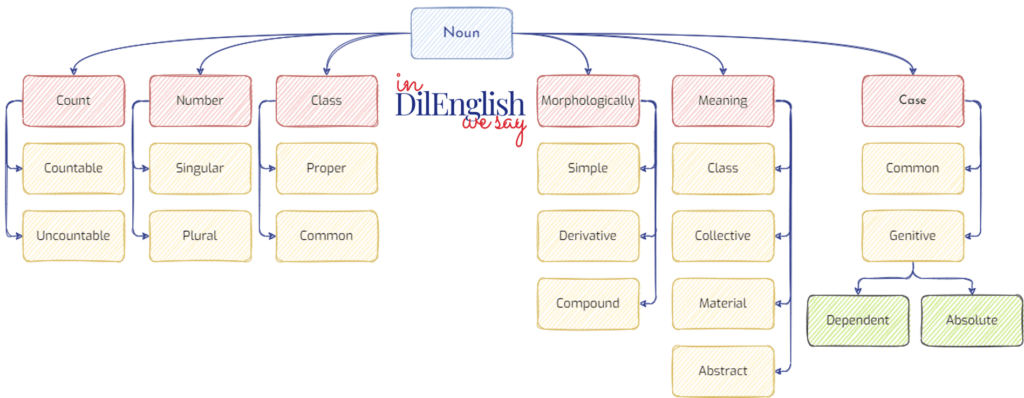The noun is a word expressing substance in the widest sense of the word. In the concept of substance, we include not only names of living beings (e. g. boy, girl, bird) and lifeless things (e. g. table, chair, book), but also names of abstract notions, i. e. qualities, states, actions (kindness, strength, sleep, fear, conversation, fight), abstracted from their bearers.
Morphological Characteristics
The noun has the following morphological characteristics:
Nouns that can be counted have two numbers: singular and plural (e. g. singular: a girl, plural: girls).
Nouns denoting living beings (and some nouns denoting lifeless things) have two case forms: the common case and the genitive case.
It is doubtful whether the grammatical category of gender exists in Modern English for it is hardly ever expressed by means of grammatical forms.
There is practically only one gender-forming suffix in Modern English, the suffix -ess, expressing feminine gender. It is not widely used.
heir — heiress
poet — poetess
actor — actress
waiter — waitress
host — hostess
lion — lioness
tiger — tigress
Gender, i. e. the distinction of nouns into masculine, feminine, and neuter, may be expressed lexically by means of different words or word-compounds:
father — mother
boy — girl
man — woman
gentleman — lady
husband — wife
boy-friend — girl-friend
cock-sparrow — hen-sparrow
man-servant — maid-servant
Very often personal or possessive pronouns indicate the gender of the noun.
Syntactical Characteristics
The noun has certain syntactical characteristics.
The chief syntactical functions of the noun in the sentence are those of the subject and the object. But it may also be used as an attribute or a predicative.
The sun was rising in all his splendid beauty. (Dickens) (SUBJECT)
Troy and Yates followed the tourists. (Heym) (OBJECT)
He (Bosinney) was an architect… (Galsworthy) (PREDICATIVE)
Mary brought in the fruit on a tray and with it a glass bowl, and a blue dish.(Mansfield) (ATTRIBUTE; the noun glass is used in the common case)
The hero and heroine, of course, just arrived from his father’s yacht. (Mansfield)(ATTRIBUTE; the noun father is used in the genitive case)
A noun preceded by a preposition (a prepositional phrase) may be used as an attribute, prepositional indirect object, and adverbial modifier.
To the left were clean panes of glass. (Ch. Bronte) (ATTRIBUTE)
Bicket did not answer, his throat felt too dry. He had heard of the police. (Galsworthy) (OBJECT)
She went into the drawing-room and lighted the fire. (Mansfield)(ADVERBIAL MODIFIER)
“Stop everything, Laura!” cried Jose in astonishment. (Mansfield)(ADVERBIAL MODIFIER)
The noun is generally associated with the article. Because of the comparative scarcity of morphological distinctions in English in some cases only articles show that the word is a noun.
A noun can be modified by an adjective, a pronoun, another noun, or by verbal.

